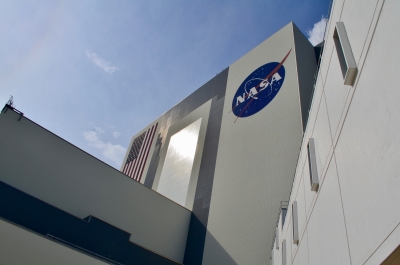NASA selects 6 SATCOM providers to partner on space communications by 2025
By IANS | Published: April 21, 2022 05:51 PM2022-04-21T17:51:05+5:302022-04-21T18:05:30+5:30
Washington, April 21 NASA has selected six American satellite communications (SATCOM) providers to begin developing and demonstrating near-Earth ...

NASA selects 6 SATCOM providers to partner on space communications by 2025
Washington, April 21 NASA has selected six American satellite communications (SATCOM) providers to begin developing and demonstrating near-Earth space communication services that may support future agency missions.
For more than a year, the US space agency has been evaluating the feasibility of employing commercial SATCOM networks for near-Earth operations as it works to decommission its near-Earth satellite fleet.
The combined value of the agency's Communications Services Project (CSP) funded agreements is $278.5 million, NASA said in a statement.
The funded companies are Inmarsat Government ($28.6 million), Kuiper Government Solutions ($67 million), SES Government Solutions ($28.96 million), SpaceX ($69.95 million), Telesat US Services ($30.65 million), and Viasat Incorporated ($53.3 million), it added.
Each company will complete technology development and in-space demonstrations by 2025 to prove their proposed solution will deliver robust, reliable, and cost-effective mission-oriented operations, including the ability for new high-rate and high-capacity two-way communications, NASA said.
The agency expects each company to match or exceed agency contributions during the five-year development and demonstration period, totaling more than $1.5 billion of cost-share investment.
"We are following the agency's proven approach developed through commercial cargo and commercial crew services.
"The flight demonstrations are risk reduction activities that will develop multiple capabilities and will provide operational concepts, performance validation, and acquisition models needed to plan the future acquisition of commercial services for each class of NASA missions," Naffah added.
Each company has proposed a technical approach to lower costs, increase flexibility, and improve performance for a broad range of missions.
The agreements create opportunities to develop innovative solutions that could potentially meet NASA's future mission requirements.
NASA said it intends to seek multiple long-term contracts to acquire services for near-Earth operations by 2030, while phasing out NASA owned and operated systems.
Disclaimer: This post has been auto-published from an agency feed without any modifications to the text and has not been reviewed by an editor
Open in app